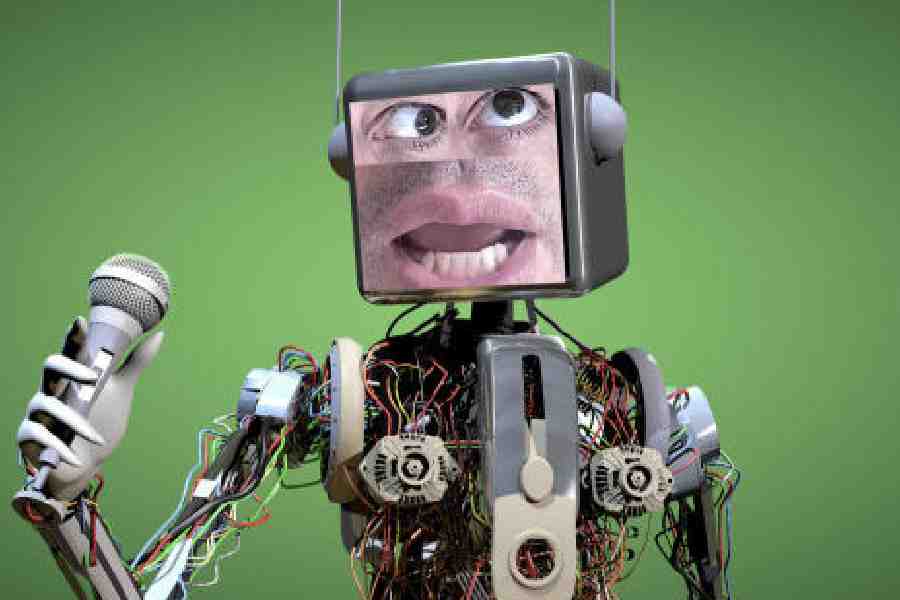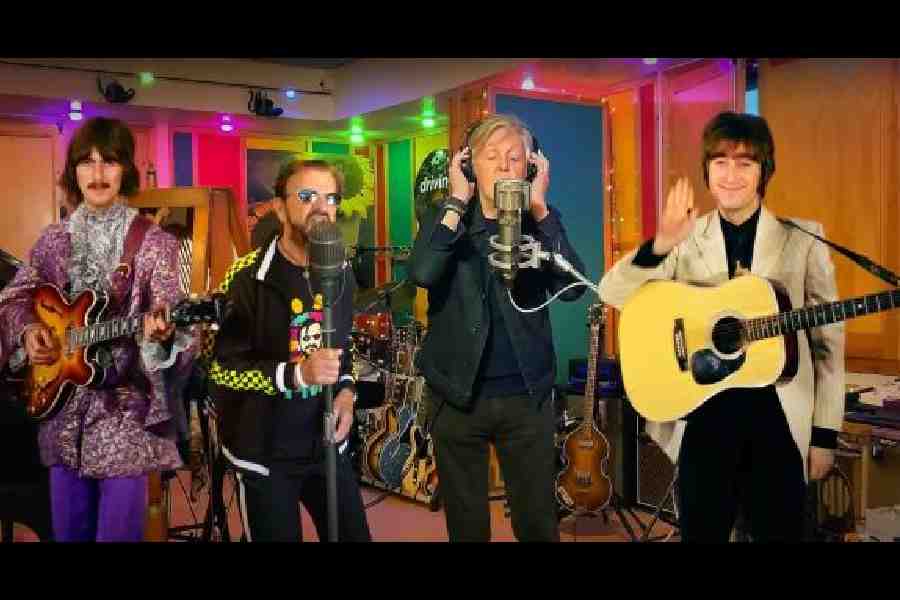Other musicians too can get by with a little help from artificial intelligence. Definitely among the high points of the year in tech (and, of course, music) is the release of Beatles’ “final” record, Now and Then. It’s not just about quenching our thirst for hearing the Fab Four sing one more time. Paul McCartney has opened the gates of what’s possible with discarded, poor-quality recordings.
Music recording will not be the same and expect music labels to release plenty of cleaned-up offerings from the past. Of course, it’s difficult to come across something like Now and Then every other month but there are plenty of poor-quality home recordings by famous musicians lying in the vault. Further, there are popular songs that can do with some brushing up.
Is it a Beatles song? AI can be legit
Call it machine learning or artificial intelligence, the technology helped the Beatles deliver one last dance with their fans. The question many are asking is whether this is truly a “Beatles song”.

There are plenty of AI tools that can make the music-making process easy Picture: iStock
Without getting into the weeds by discussing the history of the song, in 1977 John Lennon had been recording some home tape demos featuring piano and vocals but these were not released during his lifetime. When the Beatles Anthology project was unfolding in the mid 1990s, Yoko Ono gave the tapes to the remaining Beatles to see if it could be turned into anything. The sessions did a good job out of Free as a Bird and Real Love but Now and Then couldn’t be released because the technology wasn’t there to clean up the track to the point of separating Lennon’s vocals cleanly from the piano.
All that changed when film director Peter Jackson and his team came up with a machine language software — while he was working on the Get Back documentary — that has been used to separate the overbearing piano from Lennon’s voice. The filmmaker and his team applied modern audio processing technology to archival footage to isolate individual instruments and voices.

Grammy viewership from 2013 to 2023
The audio software is called MAL or Machine Audio Learning. Sure, it rhymes with HAL from 2001: A Space Odyssey but Jackson’s software is not the antagonist... not yet. Machine language models can be trained on the guitar (or other instruments) to learn the spectral signature of a guitar. When the track was worked on and shelved in the 1990s, George Harrison recorded some guitar parts and McCartney and Ringo Starr too made their contribution. Everything comes together.
Influencing the way we listen to Now and Then are its two components — a song with AI/ML elements and the other being the “final” Beatles number. Frankly, the song is haunting, melancholic and a fitting finale. Lennon’s clever usage of minor chords in a row gives the song its reflective quality.
MAL is something that, in a way, forms the backbone of video calls — it suppresses everything that isn’t the speaker’s voice, that is, background noises like barking, crying and cheering. A very simple version of MAL can be used to make karaoke versions of a track.
If you look at it objectively, Lennon’s voice hasn’t been faked. It’s him. Technology simply clears things up.
AI means trouble
Artificial intelligence is basically using computers to match or exceed the abilities of a human. In other words, it’s the ability to discover, infer or reason and it does all this without having to be programmed. Think of AI as an umbrella that covers machine learning, deep learning, neural networks, speech recognition, robotics, seeing, hearing… anything a human being can do. If Godzilla has to feed on radiation, AI needs to feed on massive amounts of data to the point it can start creating sentences or perhaps even string a tune.
Till Paul McCartney decided to make clever use of AI and ML, the year has basically seen Team AI been led by a TikTok account called ghostwriter977 that created a song called Heart On My Sleeve which has AI-generated voices of Drake and The Weeknd. Then there has been an eight-track album called AIsis: The Lost Tapes, released by the indie band Breezer. The group created the original music during lockdown in 2021 and then decided to bring in the voice of Liam Gallagher, who has turned out to be AI technology. We also have had the moment when Kurt Cobain has “sung” a version of Soundgarden’s Black Hole Sun.
What the latest Beatles track will do is inspire other musicians to look at using AI for reviving old tracks. Recently, Peter Jackson told The Times: “We can take a performance from Get Back, separate John and George, and then have Paul and Ringo add a chorus or harmonies. You might end up with a decent song but I haven’t had conversations with Paul about that.”
Surely, there must be recordings by Elvis Presley, Doors and Frank Sinatra that can be cleaned up for release. But will AI enthusiasts stop at that or make Presley sing Light My Fire?
Eye on the future
When peer-to-peer application Napster arrived on the scene in 1999, youngsters started sharing MP3 files of every album they could lay their hand on. Suddenly, we had the entire discography of Bruce Springsteen available for zilch. Music business suffered until iTunes arrived and Steve Jobs proposed per song payment, which was acceptable. And then came music streaming.But technology doesn’t move backwards. Look at Auto-Tune. Cher used it on her album Believe in 1998, inspiring many singers to make it a template. The same goes for AI. Nobody is going to stop using it. So, what are labels and artistes going to do about it?As technology improves, you will hear mash-ups that sound like lost tracks of dead artistes. And it will be impossible for labels to chase down accounts putting out AI-generated music.It may lead to something unique, multi-instrumentalist Rick Beato has pointed out. There will be Olivia Rodrigo and Olivia Rodrigo AI, Bob Dylan and Bob Dylan AI, and Lorde and Lorde AI. Casual listeners will probably accept it and make it the background track of video content they want to put out on social media. Next step: AI artistes and streaming services may warm up to them. Why not? It could be a new revenue stream.But what’s the immediate concern? Beatles has shown us meaningful implementation of ML/AI. What if more such good music from the vault keeps getting released? Last year, music historian Ted Gioia pointed out — taking help of MRC data — that old songs represent 70 per cent of the US music market. So, the present-day, young working musician has a lot to fear. Another point: In 2013, the Grammy Award was watched by 28.37 million. This year, 12.55 million viewers tuned in, according to same-day Nielsen ratings. It’s higher than 2022 figures but nowhere near pre-pandemic viewership. The already fragmented music industry is perhaps looking at an increasingly splintered future.
Part of the AI soundscape
Amper Music: Acquired by Shutterstock in 2020, it offers “creative” solutions to help content creators with a comprehensive suite of features.Jukebox: Developed by OpenAI, it can produce audio in various genres and artiste styles.AIVA: It creates compositions tailored to user preferences. The quality of output largely depends on the style you choose.Soundful: It offers “affordable” music and royalty-free tracks. On the site, users can select the genre, pick a “template”, speed of a song and a track name. Voila!Boomy: “Create original songs in seconds, even if you’ve never made music before.” That’s the pitch and the site lives up to its name.Mubert: It allows users to collaborate with its AI system, allowing them to earn money with their tracks and samples.Beatoven: Users have the freedom to choose several genres and moods, allowing them to match the music to the tone and theme of the content.Riffusion: This AI will “literally sing whatever you type”. Users enter a prompt in the search bar and the AI makes an image, or spectrogram to match. The spectrograms are turned into music.










